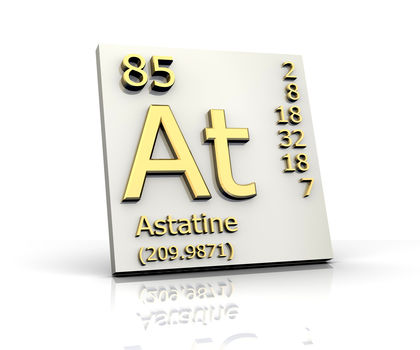
The percentage of the world reserves located in the country with the largest reserves. The higher the value, the larger risk there is to supply. The percentage of an element produced in the top producing country. Low = substitution is possible with little or no economic and/or performance impact Medium = substitution is possible but there may be an economic and/or performance impact High = substitution not possible or very difficult. The availability of suitable substitutes for a given commodity. A higher recycling rate may reduce risk to supply. The percentage of a commodity which is recycled. The number of atoms of the element per 1 million atoms of the Earth’s crust. This is calculated by combining the scores for crustal abundance, reserve distribution, production concentration, substitutability, recycling rate and political stability scores. The Chemical Abstracts Service registry number is a unique identifier of a particular chemical, designed to prevent confusion arising from different languages and naming systems.ĭata for this section been provided by the British Geological Survey.Īn integrated supply risk index from 1 (very low risk) to 10 (very high risk). Where more than one isotope exists, the value given is the abundance weighted average.Ītoms of the same element with different numbers of neutrons. This is approximately the sum of the number of protons and neutrons in the nucleus. The mass of an atom relative to that of carbon-12. The transition of a substance directly from the solid to the gas phase without passing through a liquid phase.ĭensity is the mass of a substance that would fill 1 cm 3 at room temperature. The temperature at which the liquid–gas phase change occurs. The temperature at which the solid–liquid phase change occurs. The arrangements of electrons above the last (closed shell) noble gas. These blocks are named for the characteristic spectra they produce: sharp (s), principal (p), diffuse (d), and fundamental (f). The atomic number of each element increases by one, reading from left to right.Įlements are organised into blocks by the orbital type in which the outer electrons are found. Members of a group typically have similar properties and electron configurations in their outer shell.Ī horizontal row in the periodic table.

It decays into bismuth-206 through alpha decay or into polonium-210 through electron capture.ĭue to the small amounts produced and its short half-life, there are currently no uses for astatine outside of basic scientific research.A vertical column in the periodic table. A total of 0.05 micrograms (0.00000005 grams) of astatine have been produced to date.Īstatine's most stable isotope, astatine-210, has a half-life of 8.1 hours.

Due to its scarcity, astatine is produced when it is needed. Small amounts of astatine exist in nature as a result of the decay of uranium and thorium, although the total amount of astatine in the earth's crust at any particular time is less than 30 grams. This work was conducted at the University of California in 1940.
#Astatos astatine free
This created astatine-211 and two free neutrons.

MacKenzie and Emilio Segrè by bombarding an isotope of bismuth, bismuth-209, with alpha particles that had been accelerated in a device called a cyclotron.


 0 kommentar(er)
0 kommentar(er)
